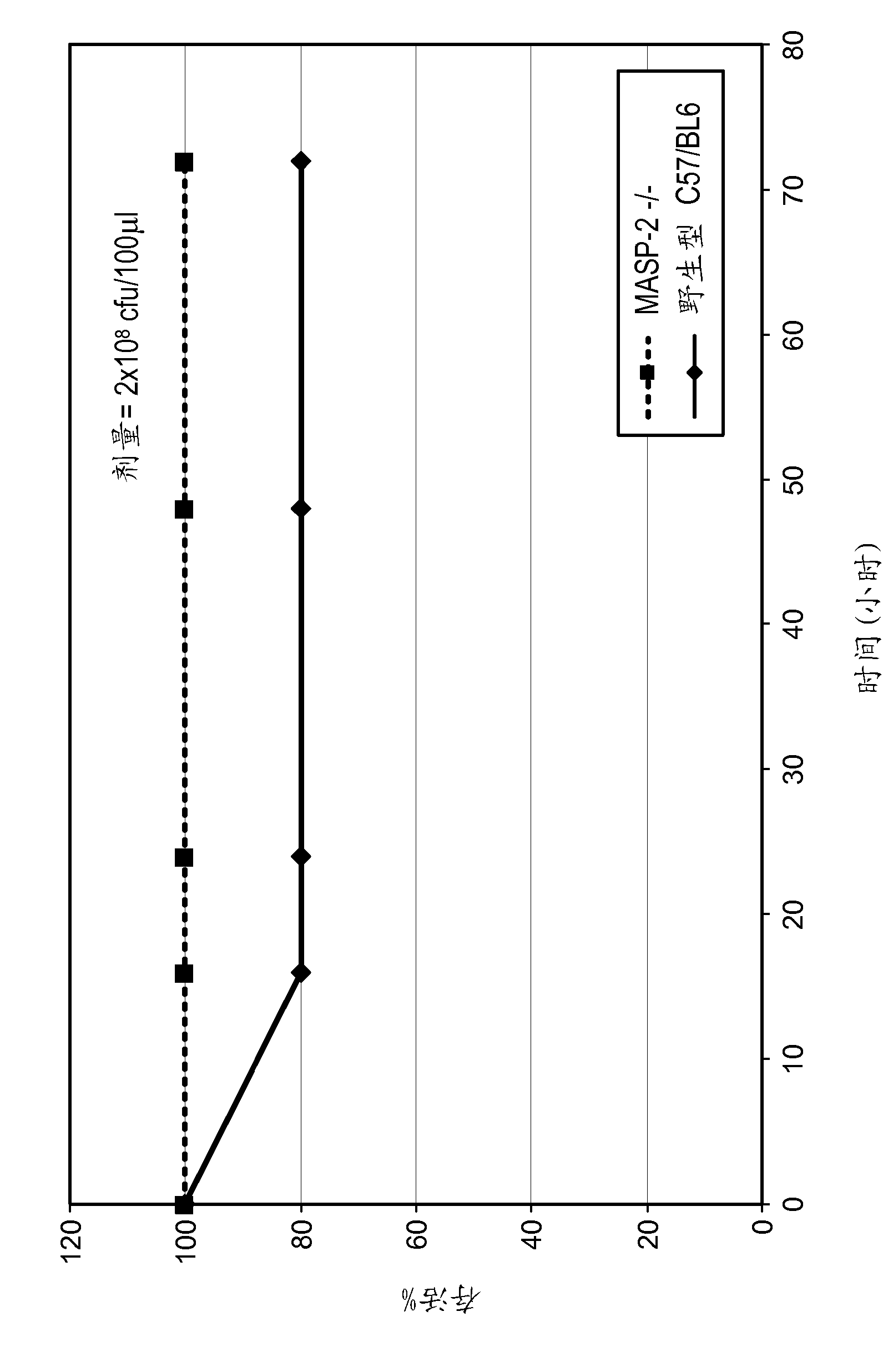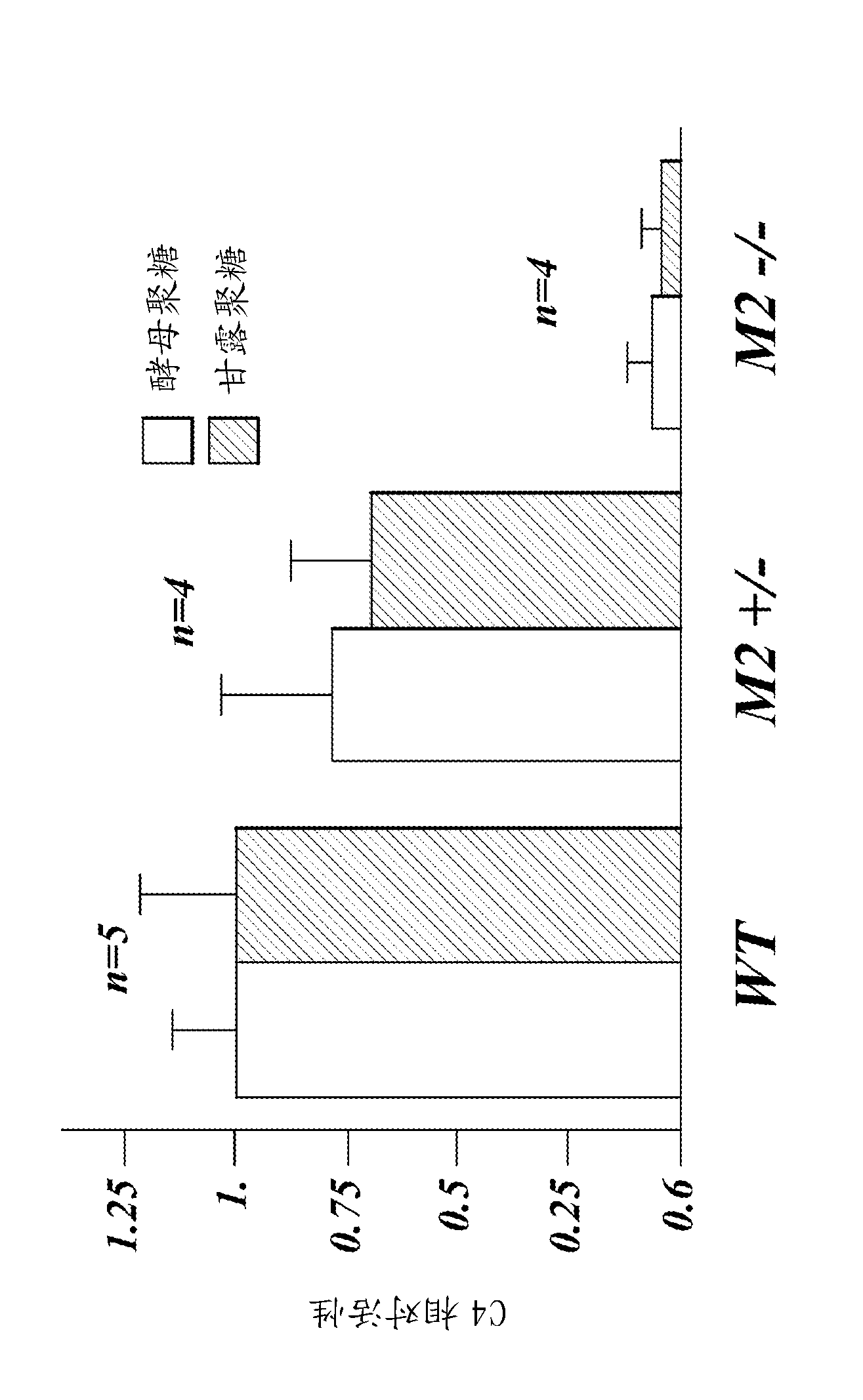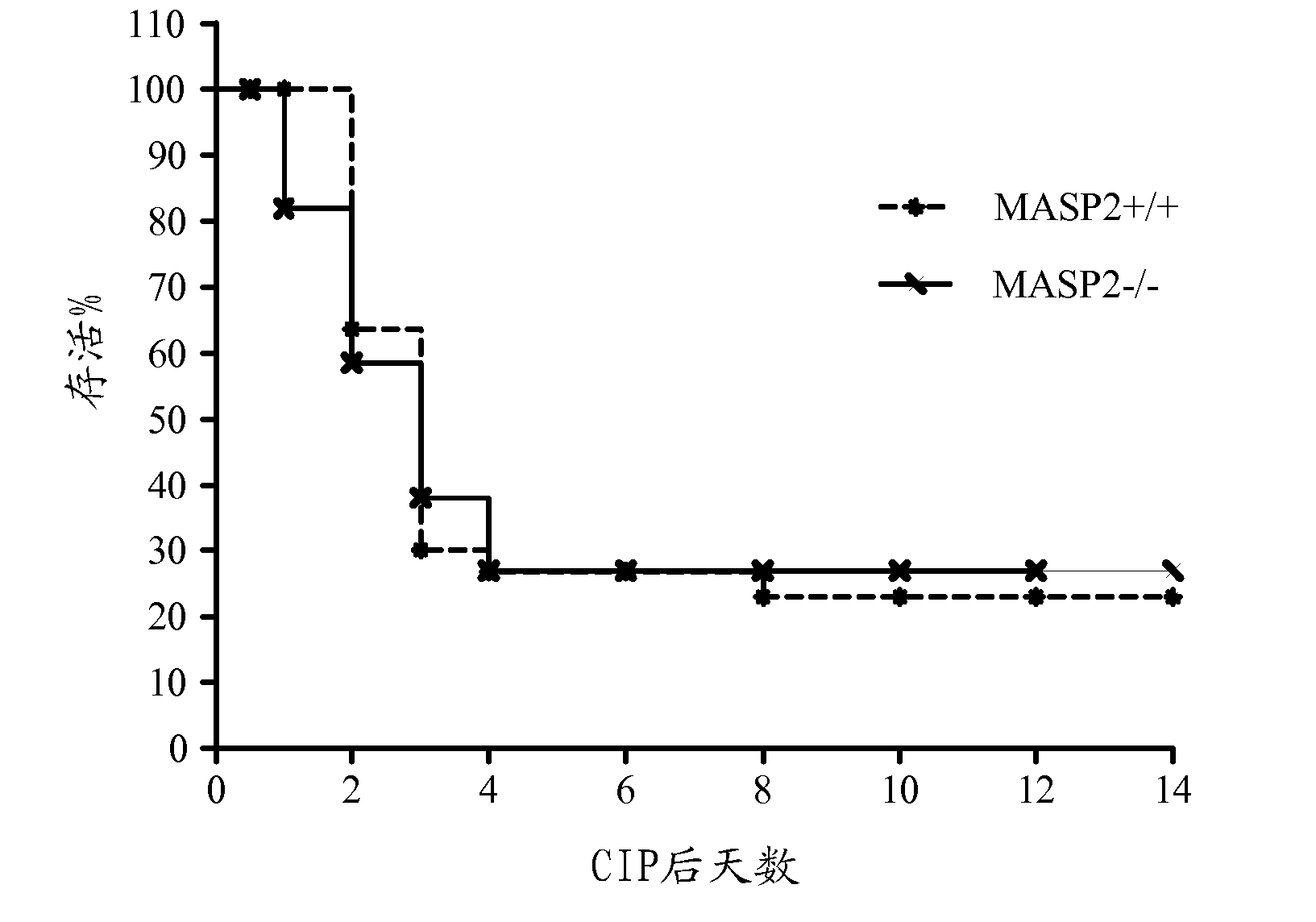Methods for treating disseminated intravascular coagulation by inhibiting MASP-2 dependent complement activation
A MASP-2, complement activation technology, applied in chemical instruments and methods, biochemical equipment and methods, allergic diseases, etc., can solve problems such as the complexity and diversity of carbohydrate structures that are difficult to identify and share molecular determinants
- Summary
- Abstract
- Description
- Claims
- Application Information
AI Technical Summary
Problems solved by technology
Method used
Image
Examples
Embodiment 1
[0497] This example describes the generation of a mouse strain deficient in MASP-2 (MASP-2- / -) but sufficient in MAp19 (MAp19+ / +).
[0498] Materials and methods: The targeting vector pKO-NTKV 1901 was designed to disrupt the three exons encoding the C-terminus of murine MASP-2, including the exon encoding the serine protease domain, see Figure 4 . The murine ES cell line E14.1a (SV129 Ola) was transfected with PKO-NTKV 1901. Neomycin-resistant and thymidine kinase-sensitive clones were selected. 600 ES clones were screened, of which 4 different clones were identified, confirmed by Southern blotting to contain the expected selection of targeting events and recombination events, see Figure 4 . Chimeras were generated from these 4 positive clones by embryo transfer. The chimeras were then backcrossed against the genetic background C57 / BL6 to generate transgenic male mice. When transgenic males were crossed with females to produce F1, 50% of the offspring showed MASP 2 H...
Embodiment 2
[0502] This example demonstrates that MASP-2 is required for complement activation through the alternative and lectin pathways.
[0503] Methods and Materials:
[0504] Lectin pathway-specific C4 cleavage assay: The C4 cleavage assay is described in Petersen et al., J. Immunol. Methods 257 : 107 (2001), an assay that measures the activation of the lectin pathway produced by lipoteichoic acid (LTA) from Staphylococcus aureus that binds L-ficolin. A modification of the assay described in Example 11 was used to measure agglutination by MBL by adding serum from MASP-2 - / - mice after coating plates with LPS and mannan or zymosan Activation of the protein pathway, as described below. The assay was also modified to eliminate the possibility of C4 cleavage by the classical pathway. This is achieved by using a sample dilution buffer containing 1 M NaCl, which allows the lectin pathway recognition components to bind their ligands with high affinity, yet prevents the activation of en...
Embodiment 3
[0531] This example describes the generation of a transgenic mouse line expressing a murine MASP-2- / -, MApl9+ / + human MASP-2 transgene (mouse MASP-2 knockout, human MASP-2 knockin).
[0532] Materials and methods: Construct including human MASP 2 The small gene (SEQ ID NO:49) of gene promoter region and encoding human MASP-2, is called " mini hMASP-2 ", see Figure 5 , which includes the first 3 exons (exon 1 to exon 3), followed by a cDNA sequence representing the coding sequence of the next 8 exons, thus encoding full-length MASP driven by its endogenous promoter -2 protein. Injection of mini hMASP-2 constructs into MASP-2- / - zygotes to transgenically express human MASP-2 in place of deletion mice MASP 2 Gene.
PUM
 Login to View More
Login to View More Abstract
Description
Claims
Application Information
 Login to View More
Login to View More - R&D
- Intellectual Property
- Life Sciences
- Materials
- Tech Scout
- Unparalleled Data Quality
- Higher Quality Content
- 60% Fewer Hallucinations
Browse by: Latest US Patents, China's latest patents, Technical Efficacy Thesaurus, Application Domain, Technology Topic, Popular Technical Reports.
© 2025 PatSnap. All rights reserved.Legal|Privacy policy|Modern Slavery Act Transparency Statement|Sitemap|About US| Contact US: help@patsnap.com



